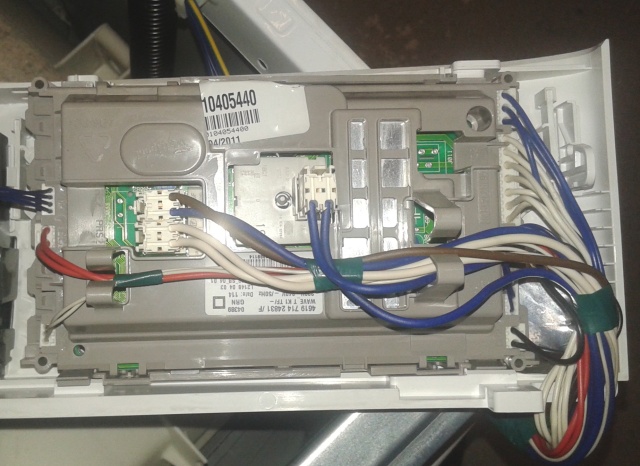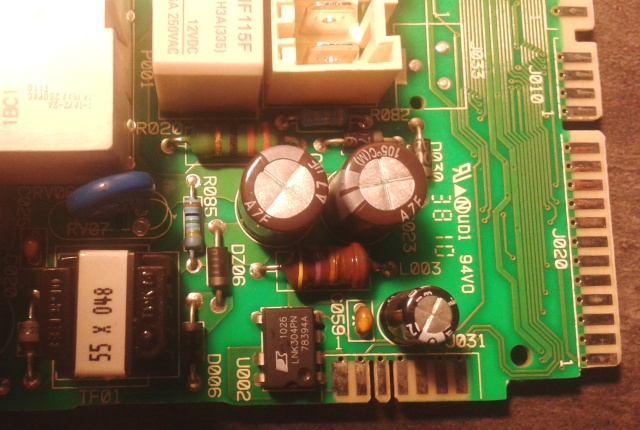On est rentré dans la nuit de Lundi des vieilles charrues. Ouch jai passé la journée à dormir. Voici le récit en 3 lignes, 4 mots et pas beaucoup de lettres d’un week-end plutôt bien chargé.
Vendredi
On est parti Vendredi vers 16h d’ici direction Carhaix. On est arrivé vers 17h30 au parking Est-1 (le premier celui tout près du site). Garage de la caisse, on matte 2 sec, ok, on plante la tente ici. Kool c’est près du festival. et y déja des tentes.
Voila on part pour le festival.
On a donc vu dans l’ordre:
- Starsailor: bof c’était pas génial et on a pas tout vu en +
- Alain Bashung: Les mouvements de foule dans le public ont complètement bousillé le concert.. pauvre Bashung .. même pas de rappel.. peut être le bar n°8 est mal placé ? Pourquoi ne pas avoir passé Bashung sur la grande scène ? (en inversant avec Divine Comedy par ex ?)
- Texas: Franchement les singles vieux de 10 ans, je trouve ca limite.. je ne suis pas fan non +
- The Divine Comedy: C’est de la Easy listenning hein .. donc bah perso, j’adore Neil donc ..
- Pleymo: Le meilleur souvenir pour nous tous. Ce groupe est vrai groupe bourrin, à la limite de la parodie du trash. On a (dans l’ensemble) bien kiffé, car c’était bien impressionnant. Tout ce bruit et ces gens qui bougent dans tous les sens. Et le Brave Heart un nouveau style de pogo.
Ensuite rentrage au parking après une bière pour la route, et gros dodo. C’était plutôt calme. Sauf qu’à 9h, des gens de la sécu sont venu pour nous virer. Il y avait 2 bandes différentes, mais ceux avec vestes orange et des muscles en rab, aurait pu aussi passer sur http://www.brainshop.com. Dans la série brutes épaisses ils étaient bien classées, sans parler de celui qui passait ces nerfs en tappant sur les plots de signalisation, à priori juste pour montrer qu’il n’avait que ça a faire. (Mais que fait la DDE !). Enfin bref on s’est éjecté comme des merdes, après 7 ou 8 ans de festival pour moa, c’est la première fois que je vois ça. La raison de cette explusion: la rentabilité. Ma tente prenait une place de parking et ca c’est intolérable ! :)
Samedi
Donc on a fait promenade dans Carhaix (A 9h le Samedi matin Carhaix c mort) , puis mangé à Huelgoat au bord du lac c’était magnifique. Ensuite après une petite sieste retour à Carhaix. Après quelques coups de phone, je décide de poser la voiture au parking Est-2. On prend la tente et le reste direction, le camping officiel cette fois. Heureusement que le bus est là. Le chauffeur est génial, il nous fille un coup de main pour charger le matelas de 1m40 plié en 4. On rejoint les potes sur le camping tout çà .. petite pause (ouf) Ensuite:
- Paul Personne: Hum j’aime pas ce truc
- Cali: j’étais trop loin pour apprécier
- Patti Smith: Génial, bon je suis un peu fan aussi.. j’ai adoré ré-entendre ces vieilleries. Par contre je regrette que l’on n’ai pas eu droit aux tubes comme ‘Dancing Barfoot’ ou ‘Because the night’..
- Et M: Incontestablement génial! Quel concert, la mise en scène était vraiment bien, et il n’a pas peur de jouer avec le public. Seul bémole, il y avait beaucoup trop de monde, et ca bousculait, marchait sur les pieds.. c’est dommage. Le public n’est pas toujours à la hauteur des artistes hélas.
- Pour finir sur la scène electro, ou j’aurais préféré de bonne vieille tek mais bon.. bonne ambiance quand même.
Voila ensuite nuit un peu mouvementée au camping.. mais c’était raisonnable. Les chiottes c’est toujours pas ça, même dans le camping. Avec autant de bénéfices que génère les VC pourqoi ne pas construire des vrais WC en dur et payé des gens pour les nettoyer ??? !
Dimanche
Réveil tardif .. repas léger et Go!
- Hugues Aufray: Bah, pas génial génial hein
- Thomas Fersen: J’avais besoin d’un truc + péchu à cette heure
- IAM: J’aime bien le HipHop, et IAM ca le faisait bien. J’ai adoré la hola si qqun a le film, je prend :). Concert bien huilé, un peu trop peut être.
- Muse: Scottchant, le concert m’a fait complétement oublié l’aspect répétitif de ce groupe. Je ne sais pas s’il existe un DVD du concert de Muse, mais ca doit déchirer. La vidéo en background y ai certainement pour beaucoup.
- Horace Andy: Je n’ai hélas pas eu le temps de voir le concert en entier, mais cette voix c’est sans commentaires.
Voila c’est fini, on est rentré au parking en bus à 1h du mat. Et on est encore tombé sur un chauffeur super sympa.
En général
Il y a clairement 2 concerts au dessus du lot, et largement cette année: Muse et M. Les autres étaient +/- réussi, mais on devient éxigeant avec le temps. Pour le reste:
- La bouffe était vraiment sympa, le poulet et autre thon, sauf les crèpes qui étaient pas top (un comble pour le finistère).
- Les chiottes c’est toujours pas ca !! ca pue !! c’est crado !! (bon d’accord y a du mieux mais quand même)
- Retirer les bouchons des bouteilles d’eau, c’est stupide. Soit disant c’est pour pas les lancer sur la scène. Mais j’aurai pu jetter mes 2 briquets, ou les goblets vides, ou encore les bouteilles pleines.. ou les pichets.. cette fausse excuse ..
Je tenais à remercier Tijé, Jess et Alex pour leur coup de main. Et les chauffeurs des cars Verney.








 Tout cela semble bien merveilleux, sauf que les journalistes ont la mémoire un peu courte. L’un des premiers objets connectés vendu fut bien le
Tout cela semble bien merveilleux, sauf que les journalistes ont la mémoire un peu courte. L’un des premiers objets connectés vendu fut bien le